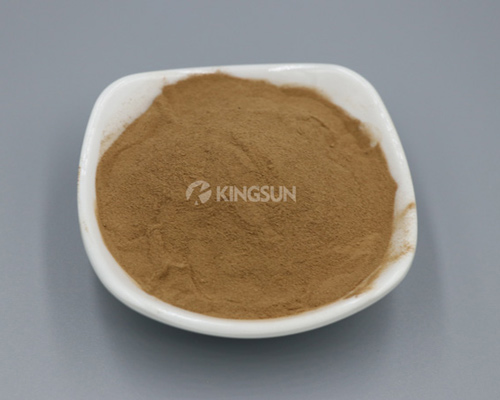Lignosulfonates have emerged as a versatile and eco-friendly option for enhancing concrete properties. Derived from wood pulp during the sulfite pulping process, lignosulfonates are widely used as water-reducing admixtures in the construction industry. In this article, we’ll explore the various types of lignosulfonates and their unique contributions to concrete performance.

- Sodium lignosulfonate is the most commonly used type of lignosulfonate in concrete applications. Its main role is to act as a highly efficient water-reducing agent. By dispersing cement particles and reducing their attractive forces, sodium lignosulfonate improves concrete workability and flowability, without the need for excess water. This results in increased compressive strength and enhanced long-term durability of the concrete.
- Calcium lignosulfonate is another essential type of lignosulfonate used in concrete production. It is particularly suitable for concrete mixes that require a longer setting time. Calcium lignosulfonate offers excellent early strength development and provides enhanced plasticity, making it ideal for applications like precast concrete and concrete pipes.
- Magnesium lignosulfonate, a less commonly used type, offers similar water-reducing properties as other lignosulfonates. However, it exhibits a unique advantage in situations where a higher pH is desirable. Additionally, magnesium lignosulfonate can be beneficial for concrete mixes with specific chemical requirements.
- Ammonium lignosulfonate is known for its ability to provide air entrainment in concrete. While some level of air entrainment is essential for freeze-thaw resistance, excessive air content can compromise the concrete’s strength and finish. Ammonium lignosulfonate helps maintain optimal air content while still improving workability and strength.
- Various modified lignosulfonates have been developed to meet specific performance demands. These modifications can include variations in the lignosulfonate’s molecular structure or the incorporation of additional chemical components. Modified lignosulfonates are tailored to enhance specific concrete properties, such as reducing shrinkage, increasing sulfate resistance, or improving workability under challenging conditions.
In conclusion, lignosulfonates offer a range of benefits to concrete production, making them an invaluable tool for the construction industry. Sodium lignosulfonate, the most commonly used type, excels in water reduction, workability improvement, and enhanced durability. Calcium lignosulfonate provides excellent early strength development and plasticity. Magnesium lignosulfonate is chosen in cases where higher pH and specific chemical requirements are needed. Ammonium lignosulfonate offers air entrainment capabilities for optimal freeze-thaw resistance. Finally, modified lignosulfonates are designed to address unique concrete performance needs.
The primary reasons for using lignosulfonates in concrete
Water reduction. Act as concrete water reducing admixture. When added to the mix, they disperse and separate the cement particles, reducing the attractive forces between them. This results in increased workability and flowability of the concrete without the need for excessive water content. By reducing the water-to-cement ratio, lignosulfonates enhance the strength and durability of the concrete.
Improved workability. These lignosulfonates improve the workability and plasticity of concrete. This makes the concrete easier to place, compact, and finish, making it more suitable for various construction applications.
Enhanced strength and durability. By reducing the water content and increasing the cementitious materials in the mix, lignosulfonates contribute to higher concrete compressive strength and improved long-term durability. Concrete with lower water content has fewer voids, leading to a denser and more durable final product.
Reduction of air entrainment. Lignosulfonates can help reduce the air entrainment in concrete. While some air entrainment is essential to improve freeze-thaw resistance, excessive air content can negatively impact the concrete’s strength and finish. Lignosulfonates help maintain the optimal air content.
Cost-effective. Many Lignosulfonates are relatively inexpensive compared to other concrete admixtures, making them an attractive choice for concrete production.
Sustainable and eco-friendly. Since lignosulfonates are derived from wood pulp, they are considered renewable and eco-friendly, making them a more sustainable option compared to some synthetic admixtures.

When using lignosulfonates, it’s crucial to follow recommended dosage guidelines and perform necessary quality control tests. With proper implementation, lignosulfonates can significantly contribute to the production of high-quality, durable, and sustainable concrete structures, ensuring lasting and robust construction projects. As the construction industry continues to focus on eco-friendly solutions, lignosulfonates remain at the forefront of concrete technology, promising a greener and more sustainable future for the built environment.